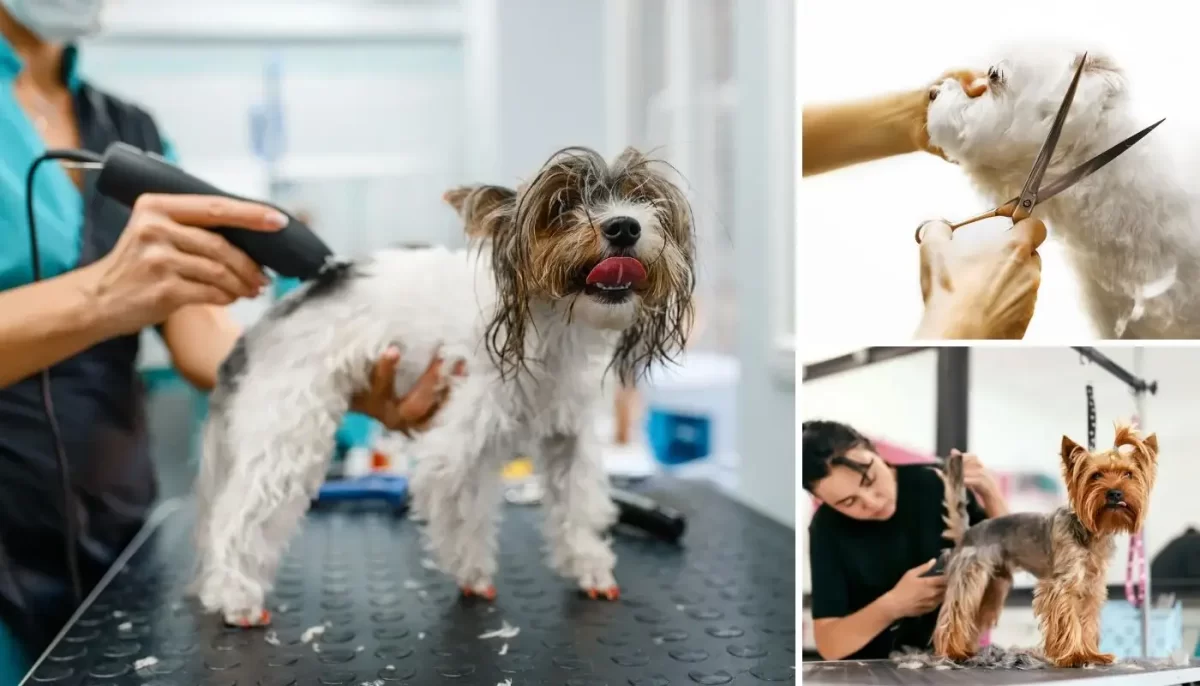How Often Should Your Dog Be Groomed in 2025?

As pet care standards continue to evolve in 2025, dog grooming is no longer a luxury-it’s a core part of responsible pet ownership. Grooming supports your dog’s physical health, emotional well-being, and overall quality of life. But one of the most common questions pet parents still ask is: How often should I groom my dog?
The answer depends on several factors, including breed, coat type, lifestyle, and health conditions. In this post, we’ll explore how grooming frequency varies, what modern pet owners should consider, and why mobile services are reshaping grooming routines for the better.
What Factors Influence Grooming Frequency?
There’s no one-size-fits-all answer when it comes to grooming. The required schedule varies significantly depending on:
-
Coat Length & Texture: Dogs with long, dense coats need grooming more frequently to prevent matting and manage shedding.
-
Breed-Specific Needs: Certain breeds produce more skin oils or are prone to specific skin sensitivities that demand regular attention.
-
Activity Level: Dogs that are highly active outdoors may accumulate dirt and debris faster, requiring more frequent baths and paw care.
-
Health Status: Dogs suffering from allergies, infections, or skin conditions, where dog health is often compromised, benefit from specialized, sometimes medicated grooming regimens.
Understanding these variables ensures that you’re not under- or over-grooming your pet-a balance that helps avoid discomfort, health problems, and costly vet visits.
What’s the Right Grooming Frequency by Coat Type?
Let’s break it down by common coat categories, along with their ideal grooming schedules:
Short-Coated Breeds (e.g., Beagles, Boxers)
These breeds are often low-maintenance, but they still shed and build up oils.
-
Brushing: Once a week
-
Bathing: Every 4-6 weeks
-
Professional Grooming: Every 6-8 weeks
Many assume that short-haired breeds don’t require grooming, but short haired dogs maintenance involves more than a quick brush. Groomers check for dry patches, hotspots, and seasonal shedding that can lead to skin irritation if left untreated.
Double-Coated Breeds (e.g., Huskies, Golden Retrievers)
Double coats are dense and shed seasonally, requiring more attention.
-
Brushing: 2-3 times a week, especially during shedding season
-
Bathing: Every 6-8 weeks
-
Professional Grooming: Every 8-12 weeks
Failing to maintain a double coat can result in impacted undercoats and overheating, particularly during seasonal transitions.
Curly or Wavy Coats (e.g., Poodles, Doodles)
These coats are prone to matting and need daily care.
-
Brushing: Daily to prevent matting
-
Bathing: Every 3-4 weeks
-
Professional Grooming: Every 4-6 weeks
Their coats trap debris and moisture, which can cause skin irritation if not regularly groomed.
Silky Coats (e.g., Shih Tzus, Yorkies)
Silky coats are high-maintenance and easily tangle.
-
Brushing: Daily
-
Bathing: Every 3 weeks
-
Professional Grooming: Every 4 weeks
Silky-coated breeds like Shih Tzus require the most attention, not only due to coat texture but also because of styling preferences. Shih Tzu hair styles-from the classic top knot to the practical puppy cut-require professional attention to maintain their shape and ensure the dog’s eyes, ears, and paws remain clean and irritation-free.
What Happens If You Wait Too Long Between Grooming?
Skipping grooming appointments can lead to a variety of issues that go beyond appearance:
-
Matted fur that causes discomfort, limits mobility, and traps moisture
-
Overgrown nails that affect gait and posture, increasing joint strain
-
Ear infections from accumulated wax or trapped debris
-
Skin irritations or “hot spots” due to dirty, oily, or tangled fur
Regular grooming helps prevent these problems and improves your dog’s overall happiness and comfort.
What Are the Grooming Trends in 2025?
The grooming industry in 2025 is smarter, more personalized, and more accessible than ever before. Busy dog owners are choosing services that cater to specific breeds, coat types, and even pet personalities. Key trends include:
Mobile Grooming Services
These offer convenience and comfort, allowing dogs to be groomed right at home. Pets experience less anxiety and owners save travel time.
Breed-Specific Styling
Groomers are now better trained to understand breed standards, coat needs, and styling techniques that match each dog’s genetics.
Eco-Friendly Products
Shampoos, sprays, and conditioners are becoming more sustainable and hypoallergenic, catering to pets with sensitive skin.
Wellness-Focused Packages
Some grooming services now offer extras like teeth cleaning, skin conditioning treatments, and even aromatherapy for a full spa-like experience.
Smart scheduling tools and pet grooming apps are also emerging, helping owners track appointments, receive reminders, and manage personalized care plans.
Final Thoughts
Determining how often your dog should be groomed is about understanding their unique needs-not just following a generic calendar. Whether your dog is a high-maintenance Shih Tzu or a low-shed Labrador, regular grooming improves health, comfort, and happiness.
Working with professional mobile services like Kontota ensures your dog receives expert care on a schedule that suits both you and your pet. With flexible appointments and breed-specific knowledge, mobile grooming is one of the most convenient and compassionate choices a dog owner can make in 2025.









